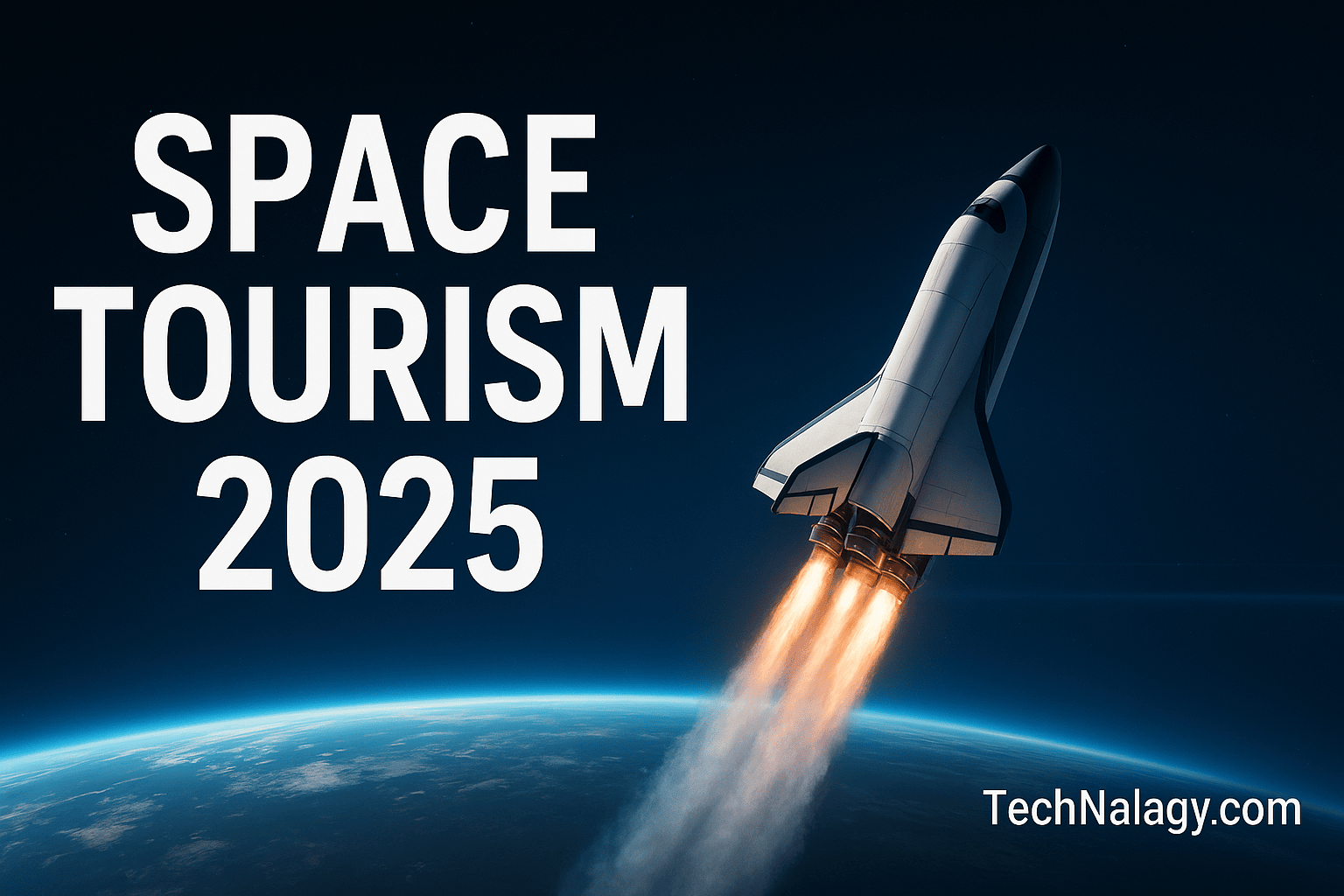Space Tourism 2025: Costs, Companies & What the Future Holds for Travelers
Introduction: The Dawn of Space Tourism
For decades, the dream of venturing beyond Earth’s atmosphere was reserved for astronauts backed by government agencies like NASA or Roscosmos. Today, the story is changing. Space tourism—once dismissed as science fiction—has become a serious industry with billion-dollar investments, advanced rockets, and a growing list of travelers signing up for their chance to touch the stars.
As we move into 2025, companies like Virgin Galactic, Blue Origin, and SpaceX are pushing the boundaries, opening doors to private citizens eager to experience the thrill of weightlessness and the breathtaking view of Earth from orbit. But what will it really cost? Who are the players shaping this industry? And most importantly, what does the future hold for travelers? Let’s dive into the evolving landscape of commercial space travel.
Table of Contents
The Rise of Space Tourism: A New Era of Travel
The journey toward space tourism began in the late 20th century, with early missions that sparked public imagination. The idea gained momentum when private companies started developing reusable spacecraft, reducing costs that once made space exploration impossible for civilians.
In 2025, this new frontier is not just about billionaires chasing adrenaline. It’s about the commercialization of an entirely new industry. Private companies are offering short suborbital trips, while others prepare for orbital stays and even lunar missions. The growing interest highlights a cultural shift: space is no longer a domain reserved for scientists—it’s becoming the next great travel destination.
Costs of Space Tourism in 2025
How Much Does Space Travel Cost Today?
The biggest question for most people considering space tourism is: how much does it cost? Currently, tickets remain expensive:
- Virgin Galactic charges around $450,000 per seat for suborbital flights.
- Blue Origin auctions vary but generally range between $250,000–$500,000 per passenger.
- SpaceX missions, designed for longer orbital flights, can cost tens of millions per seat.
For now, space tourism remains a luxury for the wealthy. However, these prices are expected to shift as competition grows and technology improves.
Projected Costs for 2025 and Beyond
By 2025, analysts predict gradual price reductions. As spacecraft become more reusable and efficient, companies may introduce tiered packages—luxury options for high-net-worth individuals and simplified experiences for broader audiences. Some experts envision suborbital flights dropping below $100,000 within the next decade, making space tourism accessible to adventurous upper-middle-class travelers.
Major Companies Driving Space Tourism
Virgin Galactic: Suborbital Tourism Pioneer
Virgin Galactic has been one of the earliest names associated with space tourism. Its SpaceShipTwo aircraft is designed to carry passengers to the edge of space, allowing them to experience weightlessness and see the curvature of Earth. The company’s goal is to scale operations, eventually offering multiple flights per week.
Blue Origin: Space for Everyone
Blue Origin, founded by Jeff Bezos, focuses on accessibility with its New Shepard capsule, which takes passengers on suborbital journeys. The emphasis on safety and reusability has made it a major competitor. Its slogan, “For the benefit of Earth,” reflects the company’s broader mission to inspire future generations.
SpaceX: The Deep Space Experience
Elon Musk’s SpaceX is arguably the most ambitious player in space tourism. While Virgin Galactic and Blue Origin focus on suborbital flights, SpaceX aims for orbital and interplanetary missions. Using the Dragon spacecraft and the upcoming Starship, SpaceX plans to take civilians around the Moon and eventually to Mars.
Other Emerging Companies in Space Tourism
Beyond these giants, smaller startups and international collaborations are entering the market. Companies are exploring niche opportunities such as space hotels, orbital research tourism, and specialized luxury experiences. This growing ecosystem ensures that competition will drive innovation.
What Travelers Can Expect from Space Tourism Experiences
The Journey to Space
Preparing for space tourism isn’t like boarding a plane. Passengers undergo training that includes G-force acclimatization, safety drills, and physical evaluations. While less demanding than astronaut training, it still requires both physical and mental preparation.
The Space Experience Itself
Once aboard, travelers enjoy the ultimate highlight: weightlessness. The thrill of floating in microgravity, combined with the awe-inspiring view of Earth’s blue curve against the black void of space, is an unmatched experience. Suborbital flights last a few minutes in zero gravity, while orbital missions can last days.
Post-Flight & Future Possibilities
Companies are also working on making the after-experience unique—ranging from luxury hospitality on Earth after landing to plans for space hotels where tourists might one day stay overnight.
Challenges Facing Space Tourism
Safety Concerns
Despite technological advances, space tourism carries inherent risks. Launches involve massive amounts of energy, and even small technical failures can be catastrophic. Companies must balance innovation with rigorous safety standards to build public trust.
Regulation and Governance
International treaties like the Outer Space Treaty govern space activities, but private tourism introduces new legal complexities. Who regulates safety standards? Who is liable in case of accidents? Agencies like NASA are playing a crucial role in guiding private firms, ensuring that safety remains paramount. In fact, NASA’s Commercial Spaceflight Program emphasizes that public-private partnerships are vital to making civilian space travel both safe and sustainable.
Environmental Impact
Rocket launches release carbon emissions and particulate matter into the upper atmosphere, raising concerns about environmental damage. Companies are exploring greener fuel technologies to make space tourism more sustainable.
The Future of Space Tourism Beyond 2025
Space Hotels & Orbital Stays
The concept of space hotels is moving closer to reality. Companies like Orbital Assembly Corporation are developing plans for modular space stations that function as luxury hotels in orbit. These could become a reality by the end of the decade, offering multi-day stays in space.
Moon & Mars Travel
While orbital flights are the short-term focus, space tourism companies dream bigger. SpaceX has already sold tickets for private lunar missions. Mars remains a long-term goal, with technological hurdles still to overcome.
The Broader Impact on Humanity
Beyond luxury, space tourism has potential benefits:
- Inspiring new generations in science and engineering.
- Boosting space infrastructure for future colonization.
- Creating an entirely new sector of the global economy.
Comparisons with Other Technological Trends
The rapid progress of space tourism mirrors other disruptive industries. Just as cloud computing and artificial intelligence revolutionized business, this emerging sector is reshaping travel and exploration.
For instance, technological innovation trends aren’t limited to aerospace. Industries across the board are undergoing transformations. Just like Top 10 Management Information Systems Trends 2025, space tourism demonstrates how quickly emerging technologies can shift from experimental to mainstream.
Conclusion: A New Age of Exploration
In 2025, space tourism is at an inflection point. Costs remain high, but competition and innovation are steadily reducing barriers. Companies like Virgin Galactic, Blue Origin, and SpaceX are paving the way for experiences once unimaginable, while emerging players prepare to expand the industry further.
The future holds exciting possibilities—from space hotels to lunar tourism—and while challenges around safety, regulation, and sustainability remain, the trajectory is clear. Space is becoming the next great travel destination.
For adventurous travelers, the age-old dream of becoming a space explorer is no longer confined to science fiction. The era of space tourism has begun, and 2025 is only the beginning.

Kamran Khatri is the founder of technalagy.com, where he shares insights on AI, future tech, gadgets, smart homes, and the latest tech news. Passionate about making innovation simple and accessible, he writes guides, reviews, and opinions that help readers stay ahead in the digital world.







